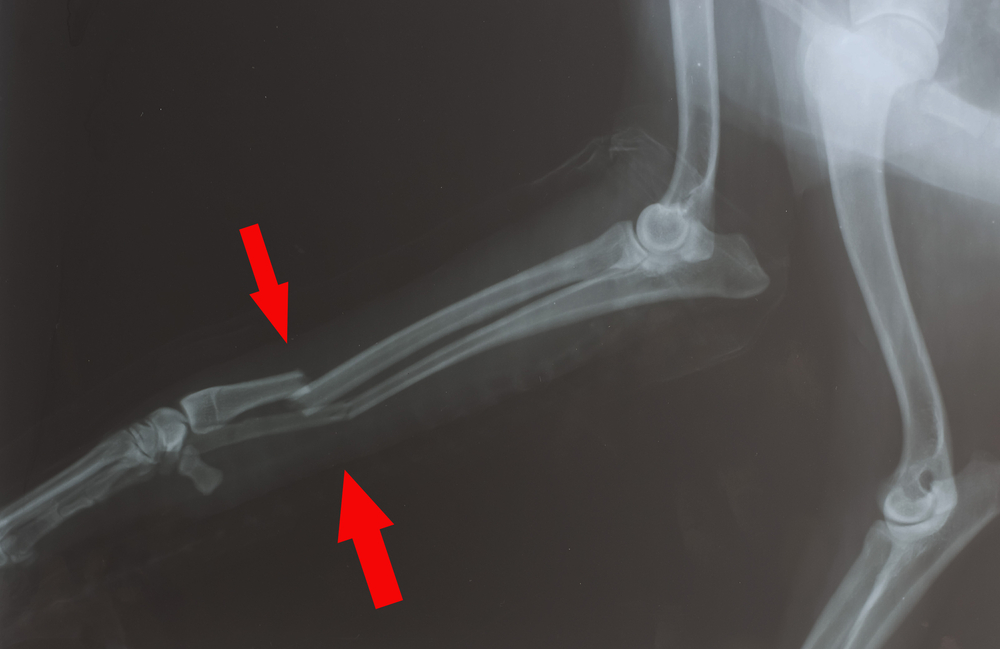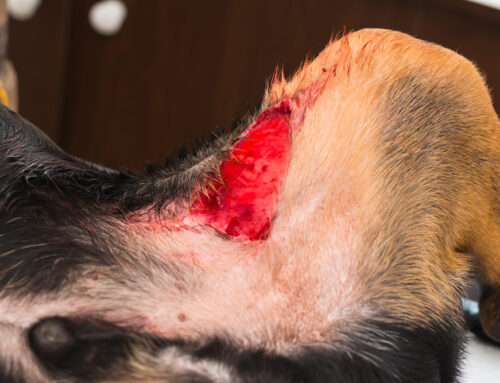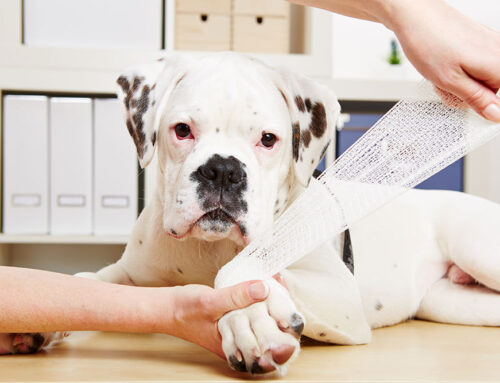Many issues can cause your dog to limp, some more concerning than others, and determining the reason can be difficult. Our Alpine Animal Hospital team is the regional leader in orthopedic surgeries, and we see many limping dogs in our practice. We want to provide helpful information about common causes of limping in dogs and how we address these conditions.
What should I do if my dog is limping?
If your dog is limping, ask yourself the following questions:
- How bad is your dog’s limp? — If your dog has a mild limp, you can monitor them for a few days to see if they improve, but if they refuse to bear weight on the limb, or are in extreme pain, they should be seen by a veterinary professional as soon as possible.
- How long has your dog been limping? — Many owners notice their dog limping and assume they will improve with rest, which may be true in some cases. You should see our veterinary team if the limp hasn’t resolved in a week.
- Does your dog have other signs? — If your dog is limping and displaying other signs, such as vocalizing, trembling, bleeding, obvious fracture or dislocation, limb dragging, swelling, lethargy, high fever, vomiting, or trouble breathing, they should be seen as soon as possible by a veterinarian.
How do I know which limb is causing my dog’s limp?
If your dog has a mild limp, you may have difficulty determining which limb is affected. Tips to assess their lameness include:
- Front limb lameness — With a front limb lameness, your dog will raise their head when the painful limb touches the ground, and lower their head when the good leg bears weight.
- Hind limb lameness — With a hind limb lameness, your dog will lean forward to take the weight off their back end, and their tail or affected hip will rise when the painful limb touches the ground.
What are common causes of dog limping?
Many conditions can cause your dog to limp. Common causes include:
- Torn nails — A torn nail in a dog can be extremely painful, and the exposed quick can bleed, further complicating matters. If your dog is affected:
- Safely restrain your dog and examine their paw. You may need someone to help if your dog doesn’t want to cooperate.
- Wrap your dog’s foot in gauze or a towel, applying pressure to the affected area.
- Seek veterinary care to remove the damaged nail. Keep their paw bandaged to prevent contamination and prevent further bleeding. Your dog may also need pain medication.
- Arthritis — Arthritis is common in dogs, especially older dogs, and can cause significant joint pain and mobility issues. In addition to limping, signs include decreased activity, difficulty navigating stairs, walking stiffly after resting, and uncharacteristic irritability. If your dog is affected, potential treatments include:
- Prescription medications may be necessary to decrease inflammation and alleviate pain.
- Home modifications, such as providing ramps and thick bedding, ensuring your floors are slip proof, and raising food and water bowls, can greatly improve your arthritic dog’s quality of life.
- Physical rehabilitation exercises can help improve mobility and reduce pain.
- Joint supplements, such as chondroitin sulfate, glucosamine, and omega-3 fatty acids, may be prescribed.
- Surgery may be needed to remove damaged tissue and stabilize the joint.
- Tick-borne disease — Tick-borne diseases, such as Lyme disease, Rocky Mountain spotted fever, and anaplasmosis, can cause your dog to limp. If your dog is affected:
- If we suspect your dog has a tick-borne illness, we will pull blood to test for the disease, and perform a complete blood count and biochemistry profile to assess their overall health.
- If your dog has a tick-borne illness, we will place them on appropriate antibiotics for several weeks to clear the infection.
- Bone fractures — Hairline and complete bone fractures can cause your dog to limp. A displaced or open fracture is considered a veterinary emergency, and your dog should be evaluated by a veterinarian as soon as possible. If your dog is affected:
- For hairline or partial fractures, we will cast the affected limb.
- For complete fractures, our team uses stabilization techniques, including bone plating, internal fixation, and external fixation, depending on your dog’s condition.

- Cranial cruciate ligament (CCL) rupture — CCL rupture is the most common cause of hindlimb lameness in dogs. Labrador retrievers, German shepherds, rottweilers, and golden retrievers are at increased risk. If your dog is affected:
- For inactive dogs weighing less than 30 pounds, we likely will recommend conservative treatment that involves strict confinement for several weeks.
- For active larger dogs and small dogs, we will perform surgery to stabilize the joint and help prevent severe arthritis. Procedures include extracapsular suture stabilization and tibial plateau leveling osteotomy (TPLO).
- Patellar luxation — Patellar luxation is a common condition that occurs when the dog’s kneecap dislocates from the normal position. Small-breed dogs, such as Maltese, Pekingese, and Shih tzu, are at increased risk. Large-breed dogs, including Great Pyrenees, Great Dane, and Saint Bernards, are also at increased risk. If your dog is affected:
- For mild cases, we will provide medical treatment, involving anti-inflammatory medications, weight loss, and exercise restriction.
- For more extreme cases, we will perform surgery to keep the kneecap in place.
Many conditions can cause your dog to limp, and discovering the cause is necessary to provide the appropriate treatment. If your dog is limping, contact our Alpine Animal Hospital team, so we can diagnose the reason for their limp and devise an appropriate treatment strategy.







Leave A Comment